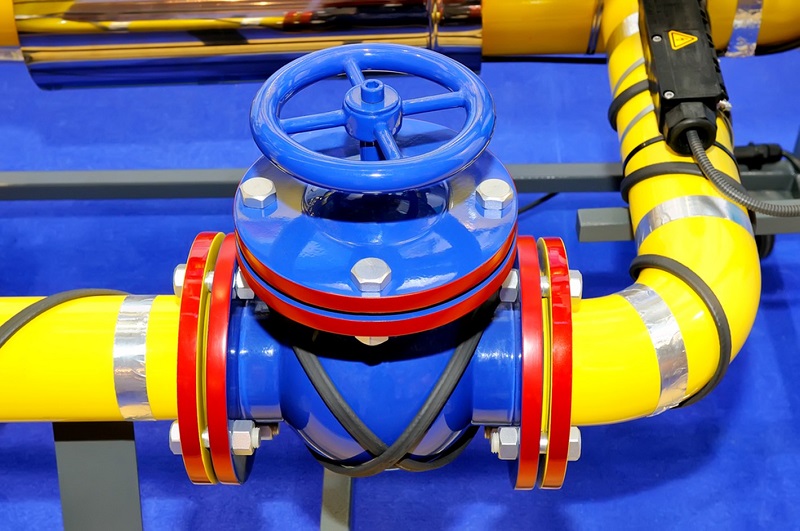In a world where efficiencies of scale and smooth operations are non-negotiable, what’s the hidden tool that sets businesses apart? How are the seemingly simple mechanisms elevating mundane industrial processes to divine symphonies of seamless workflow? The answer lies within the core of advanced industrial design – the indomitable Rotary Valve.
The innovative mechanics of this next-generation utility may not even cross your mind as you navigate your regular day. But when it comes to the beating heart of the industries shaping our world, Rotary Valves are nothing less than crucial. With their advanced features and capabilities, the accoutrement of the next-generation Rotary Valve is transforming the future of the industrial landscape. This blog post is your exploration guide into the world of these high-performer valves. Welcome aboard!
Consider it not just as a lesson, but as your invitation to peer into the soul of our most crucial industries, and understand the gears that keep us ticking.
Table of Contents
What are the Advanced Features of Next Generation Rotary Valves?
Rotary valves are no longer the lowly, unpretentious cogwheels of yesteryears. Propelled by years of research and development, they’ve amplified their utility, transforming from humble to hallowed. Embedded now with advanced features such as pressure-resistant construction, customizable rotations, variable speed settings, and precision material control, these valves have become the pulsating powerhouse of modern-day industrial machines.
The design sophistication of these advanced rotary valves makes them capable of handling diverse materials ranging from powdery substances to granular products, adding versatility to their functionality. Their customizable speed settings help regulate the flow of industrial material, allowing adaptability in different working conditions.
Moreover, the inclusion of high-end materials in the construction of these valves ensures their pressure-resistant properties. This feature allows them to operate unhindered in the harshest environments, increasing their dependability and lifespan, further bolstering their appeal in the industrial realm.
The Pros and Cons of Next Generation Rotary Valves
As with any tool, these advanced Rotary Valves bring a mixed bag of blessings and challenges. Their enhanced pressure-resistant functionality equips them to work non-stop under rigorous conditions, increasing productivity and output. The customizability and precision control they offer elevate their utility, making them indispensable to any industry.
However, the complexity of these advanced features translates into comprehensive training requirements for operators, leading to increased overheads. Furthermore, their high-end constituents might hike their initial investment cost, potentially causing a hurdle for small-scale businesses.
Why is the Upgrade to Next Generation Rotary Valves Essential?
In an industrial arena constantly evolving and pushing boundaries, the upgrade to next-generation rotary valves becomes important. Their improved functionality and robustness ensure smoother and efficient operations, thereby reducing downtime and maintenance costs.
Their ability to handle diverse materials and operate in different conditions gives companies the much-needed operational flexibility. Besides, the increased operational life means fewer replacements, contributing to the long-term financial wellness of the business.
How to Implement Advanced Rotary Valves into Your Enterprise
The incorporation of next-generation rotary valves into your enterprise is not a task to be taken lightly. The operational prowess of these advanced tools necessitates proper planning and execution. Whether you’re overhauling your operations or setting up a new production line, it’s imperative to consider and plan for things like cost, installation requirements, space planning, operator training, and compliance with safety regulations.
Exploring the Unchartered Territory of Emerging Rotary Valve Technology
The world of rotary valves doesn’t stop evolving at the next-generation level. As the demand for efficiency and productivity rises, designers are pushing the limits of what’s possible. Keep your ear to the ground for developments on self-monitoring rotary valves, IoT-enabled components, and other breakthroughs that promise to further elevate the utility of these little cogs in our industrial machine.
Conclusion: Next Generation Rotary Valves—The New Architect of Industrial Success
In summary, the advanced features of the next-generation rotary valves present a compelling case for their implementation. Their ability to elevate operations, withstand varying conditions, and offer diverse material handling has made them a beacon of industrial functions.
While they do present challenges in terms of training needs and investment costs, the benefits outweigh the drawbacks. As investments go, few tools promise as much potential return as these workhorse valves. So, take the leap of faith and gear-up to propel your enterprise to new heights with these revolutionary tools.
Remember, the future waits for no one, and in the vast expanse of industrial design, the next-generation rotary valve is indeed the new harbinger of operational success.

